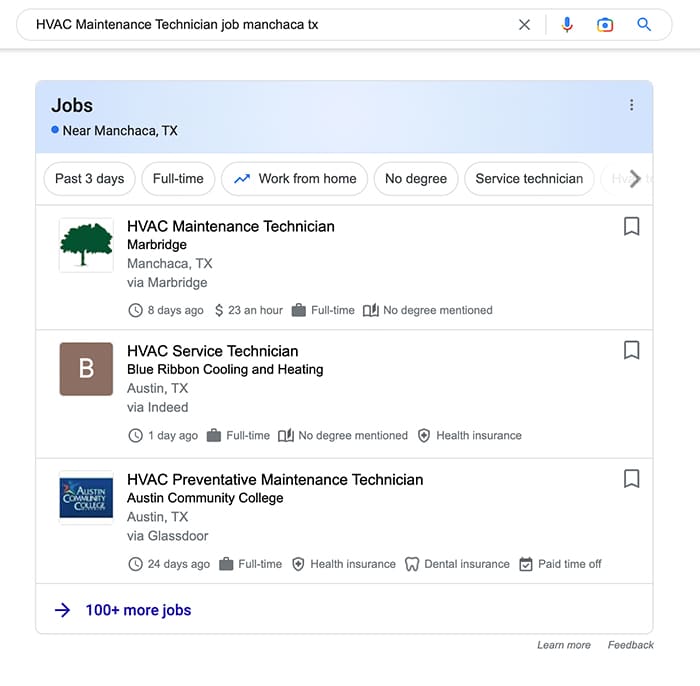Google is typically the first stop for candidates seeking new jobs, but many employers aren’t showing up in one of the most powerful new listings for job openings: Google Jobs. So, how do you get your job listing featured in Google Jobs. The answer is structured data.
What is Structured Data?
Structured data is code entered by a developer that helps search engines better understand and classify the content on your website. It explicitly tells search engines what the contents of a page are. Search engines have to manage all kinds of websites that are built differently with various types of information. Before structured data, search engines had to figure out page information independently. While sites like Google were good at it, there’s always room for improvement. Thus, structured data was born.
This code – which can aid in Search Engine Optimization (SEO) – helps search engines figure out precisely what is on a webpage and enables them to narrow down which one is most likely right for the searcher. Although structured data is an optional feature when creating a website, without it, your site can get lost in the noise. This coding method is a powerful tool that improves SEO and serves as a digital roadmap taking users directly to the information they need. When configured correctly, structured data can yield a “rich result” – a coveted spot in Google’s search outcome.

What is a Rich Result?
Rich results can be thought of as the 90210 of digital real estate. They are enhanced results that appear in prime real estate on a Search Engine Results Page (SERP). While there are a lot of variations of rich results like maps, FAQs, and shopping, a relatively new rich result to take advantage of is Google Jobs. Landing in the rich results area for job search can help you attract more candidates in this competitive market.
How do the Job Listings Display?
When accurately coded, structured data will produce a branded result containing the company’s logo, the job location, and perhaps even salary information. Candidates can click the listing and apply directly on the company’s website.

How Can Structured Data Help Me Hire?
By using structured data, you are able to state exactly what you are looking for in a candidate. You can list requirements, including education and experience, and state whether or not the position is remote. All of these qualifiers help the candidate using Google Jobs filter to the right role just by clicking search – giving you a higher quantity of qualified applicants. Structured data allows you to create a precise job-board-style listing that is free to use and heavily trafficked through Google.
How Do I Implement Structured Data Into My Future Job Listings?
Implementing structured data makes it easier for Google to index job listings, which helps you rank higher in search results. While this is a powerful feature for any type of business, unfortunately, there currently isn’t a novice-friendly way to correctly set up structured data. Without coding experience, your best bet is to start with the public code available through Google to configure structured data. Or you can trust the experts at Workhorse Marketing to create or optimize a career page that will attract the ideal employee to your business. Anybody can view the code that contributes to structured data; but if you don’t want to run the risk of incorrectly reading and writing it, we’re here and happy to help.

